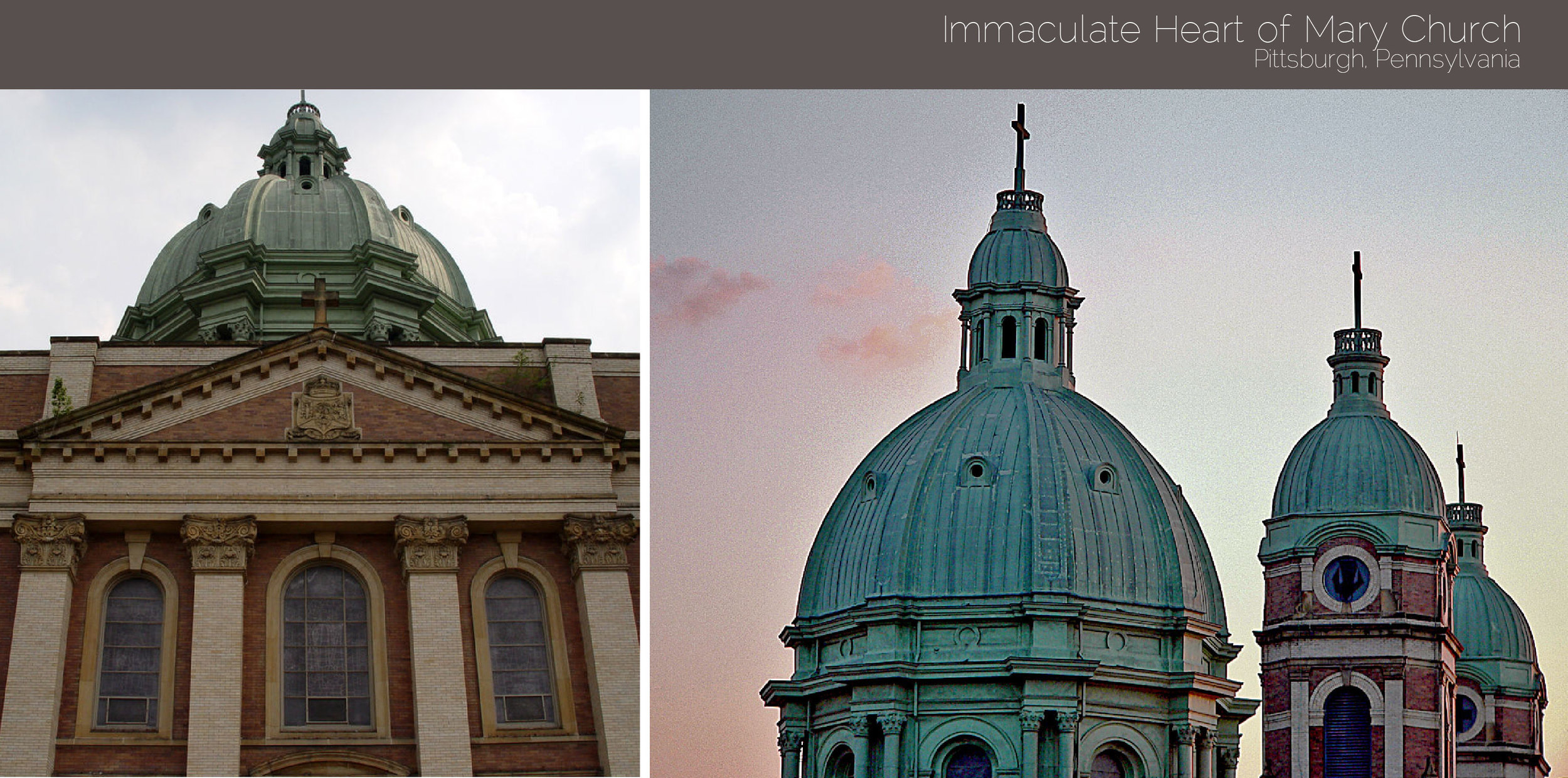St. Mary of the Angels in Chicago, the Basilica of St. Josaphat in Milwaukee, and Immaculate Heart of Mary in Pittsburgh are some of the greatest example of a specific architectural style know as “Polish Cathedral Style.” This style emerged in the Polish immigrant cities of the American Midwest during the early twentieth century. Chicago in particular has an extensive collection of these churches because it has the world’s second largest Polish population (after Warsaw).
Although not cathedrals in their proper sense - as none of these are the central church of a diocese nor do they contain the bishops' cathedra - the size of these churches would rival any cathedral, with seating capacities sometimes over 2,000.
Although difficult to concisely define, Polish Cathedral Style "evokes the architecture of a perceived 'golden age' of Polish history [1]. These Polish churches take cues from Baroque architecture which "had a particular draw for Poles, as Poland's history reveals a flourishing of the arts in the seventeenth and eighteenth centuries." [2] They possess exuberant interiors with elaborate painting programs and exteriors that often employ bell towers and vast domes.
Even with a heavy reliance on Classical, Baroque, and sometimes Renaissance architecture the most appropriate label for Polish Cathedral Style would be eclectic. [3] Prominent architects, including Adolphus Druiding, Henry Schlacks, Worthmann and Steinbach, and Joseph McCarthy, have each had their hand at creating these grand structures. Their designs proved that they were not purists of specific style. At times this combination of elements produced results that were confusing, such as St. John Cantius in Chicago. [4] But the encouraging point is that this mix-and-match approach works.
The churches of the Polish Cathedral Style exemplify a solemnity not forgotten. Though they are palatial and grand, for those living in the shadows of these edifices, they are part of the rhythm of parish life. They are common in that they are viewed and used on a daily basis; but, they are not commonplace. The Polish Cathedral churches demonstrate a level of architectural classicism and give a glimpse of the heavenly liturgy that is sought after and today's churches should aspire to.
- Kate Kelly
[1] Denis McNamara, Heavenly City: The Architectural Tradition of Catholic Chicago (Chicago: Liturgy Training Publications, 2005), 58.
[2] Ibid.
[3] Matthew Alderman, "Forgotten Architectural Styles II: The American Polish Cathedral Style," The New Liturgical Movement, June 10, 2007, http://www.newliturgicalmovement.org/2007/06/forgotten-architectural-styles-ii.html.
[4] McNamara, 50.




